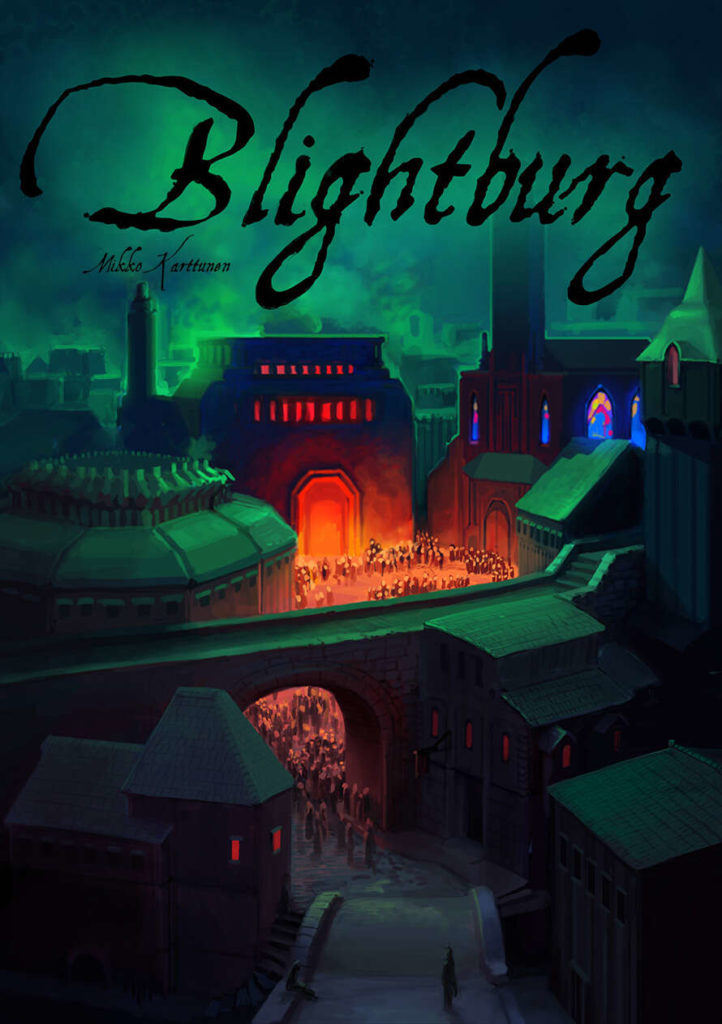I’m on a study project to improve my understanding of roleplaying games. To this end, I already have two reading projects, A Game Per Year and An Adventure Per Year. This is the third, with the goal of reading or playing 52 games made in the last few years. Originally I considered making this “A New RPG Per Week” and that’s where the number 52 comes from, even though a weekly schedule is probably not within my abilities.

Blightburg is a new Finnish roleplaying game published by Mikko Karttunen this summer. It’s international in more ways than one: It’s in English, available on Drivethrurpg and strongly inspired by staples of Anglo-American indie design such as Apocalypse World and Fate.
Set in a Renaissance Italian city state, the game follows characters of different backgrounds as they seek to realize their goals. There is no adventuring party and the characters are assumed to be at cross purposes to each other.
The goal of the game is to find out truths about who the characters are. They have dichotomies in their personality that get resolved during play as they tilt in favor of one option or the other.
The game also has a supernatural element in demons and witchcraft. They make it possible to play low-born characters so that they have the power to affect game events the same as nobles and cardinals. They’re also important for the game’s atmosphere, the blight of the game’s title.
This is a game where the characters are horrible towards each other. It tends towards bad outcomes when despicable people abandon any pretense to a moral purpose. There are game mechanics players are encouraged to use to drive each other’s characters to moral turpitude, resembling the Shadow mechanic of Wraith: the Oblivion.
Reading the game, it’s clear it exists within a play culture and an online culture that’s used to discussing design from a Storygames perspective. Indeed, if I hadn’t known terminology like Moves and Compels or specialized uses for everyday words like Fiction it would have been much harder to figure the game out.
One interesting quality about the game’s presentation is that it’s laser-focused on system. There are a few pages on Renaissance Italy as a setting and a few more about witches but most of the book reads almost like a design document.